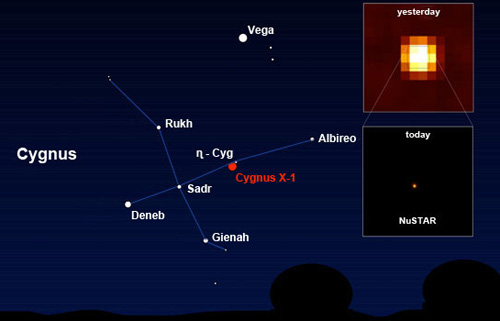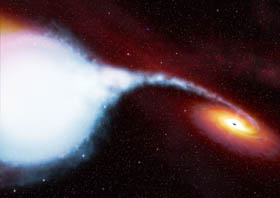Cygnus X-1

The location of Cygnus X-1 in the sky alongside images of the object taken in X-rays by NuSTAR (lower right) and an earlier X-ray space telescope.

Artist's impression of Cygnus X-1.
Cygnus X-1 (3U 1956+35) is a powerful, variable X-ray source, lying about 8,000 light-years away in the constellation Cygnus that, is one of the best known and nearest stellar black hole candidates; it was discovered in 1964.
Cygnus X-1 corresponds with a binary system, the visible component of which is a ninth-magnitude 20-solar-mass supergiant O star (spectral type O9.7Iab) catalogued as HDE 226868. The invisible companion has a mass of at least 6 solar masses, well above the limit at which a collapsed object must become a black hole. The two components are a very close orbit with a period of just 5.6 days.
The tell-tale signs that a black hole is at work are the rapidly flickering X-rays that come from super-hot material, stolen from the bright supergiant, whizzing around an accretion disk centered on the dark star.


